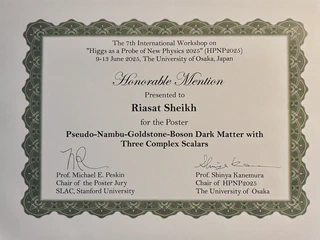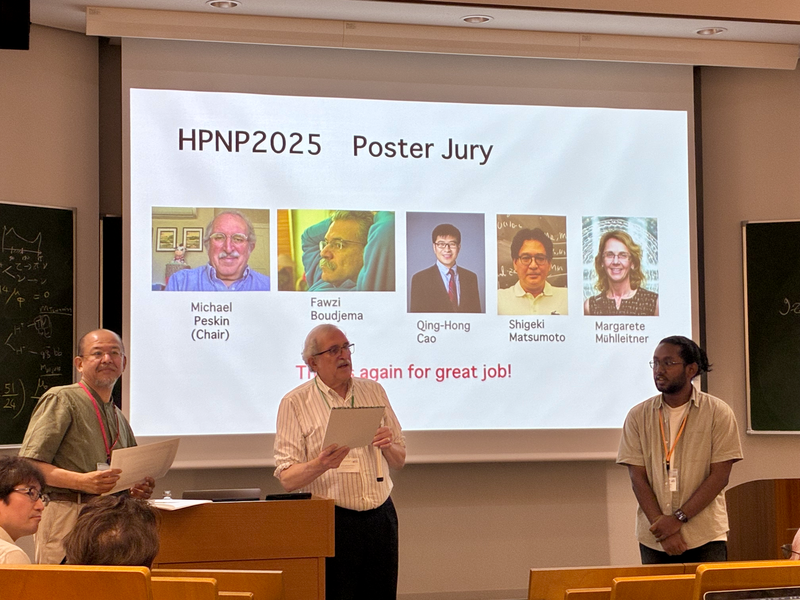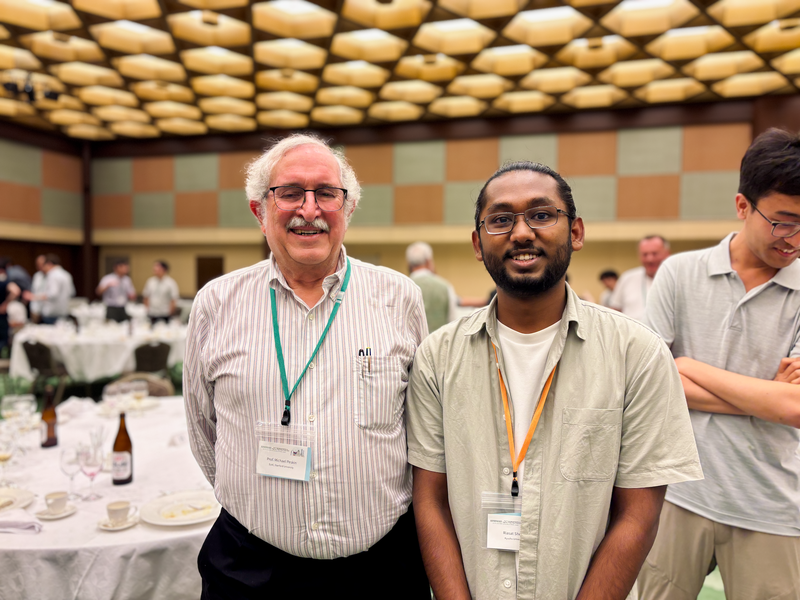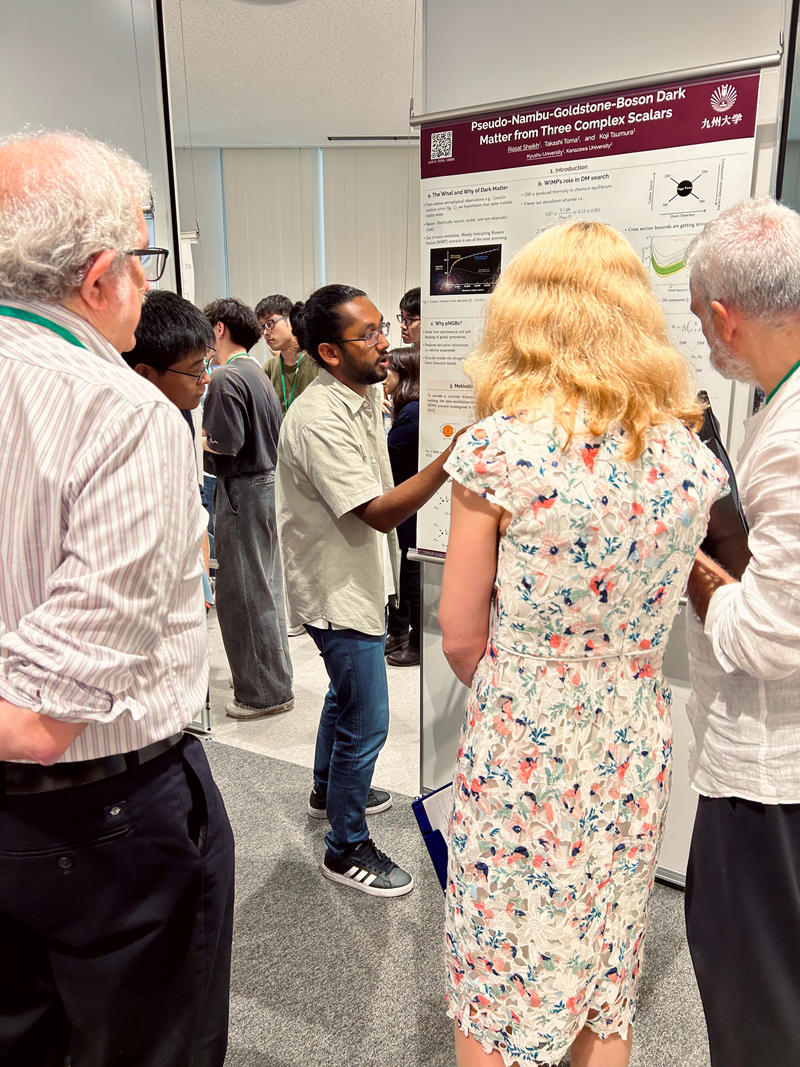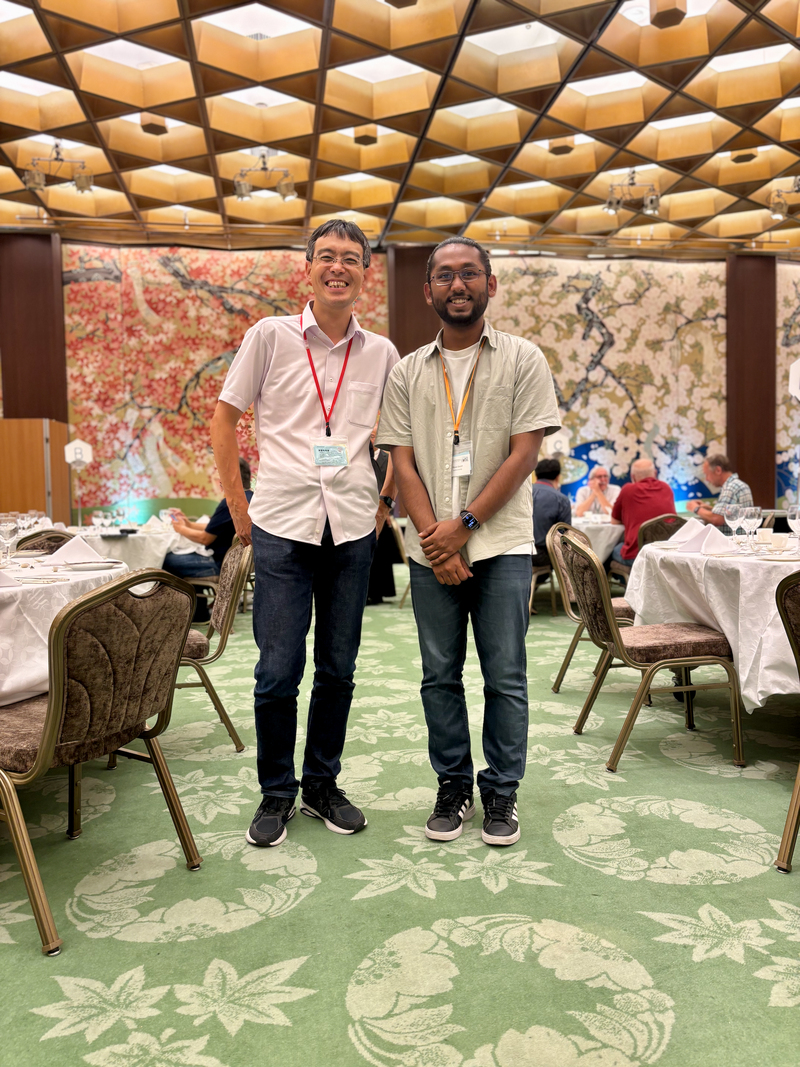Poster presentation at The 7th International Workshop on "Higgs as a Probe of New Physics 2025 (HPNP2025)", 2025
The existence of dark matter (DM) is strong evidence for physics beyond the Standard Model (SM), yet its particle nature remains unknown. While weakly interacting massive particles (WIMPs) have long been considered ideal thermal relics, null results from direct detection experiments have pushed the field toward alternative scenarios. One compelling class involves pseudo-Nambu-Goldstone bosons (pNGBs), which arise from the spontaneous and soft breaking of global symmetries. Their derivative interactions naturally suppress low-momentum scattering, allowing them to evade detection bounds while still achieving the correct relic abundance, $\Omega_{\text{DM}} h^2 = 0.12 \pm 0.001$.
In this work, we propose a new pNGB DM model based on three SM-singlet complex scalar fields charged under three dark $U(1)_V$ gauge symmetries together with a permutative exchange symmetry between the three scalars. The spontaneous breaking of these symmetries, along with a softly broken $U(1)_A$ global symmetry, leads to the emergence of pNGBs. A residual $\mathbb{Z}_3$ symmetry stabilizes the DM and permits semi-annihilation processes, which can lead to unique signatures such as boosted dark matter (BDM) potentially detectable in neutrino and direct detection experiments. One of the motivations for this model is to provide a concrete theoretical framework for realizing a semi-annihilation-driven BDM scenario and to explore whether such processes can leave observable imprints in current or future detectors.
We analyze theoretical and experimental constraints, including relic abundance, Higgs invisible decay, and perturbative unitarity, and confirmed that a viable parameter space exists. We found that the resulting BDM flux lies well below the current experimental sensitivities. Nevertheless, this setup provides a minimal and consistent framework for semi-annihilation-driven BDM and opens the path for more predictive extensions.
Nambu-Yoichiro Hall, Osaka University
Osaka, Osaka
I presented a poster titled “Pseudo‑Nambu‑Goldstone‑boson Dark Matter from Three Complex Scalars” at HPNP2025 in Nambu‑Yoichiro Hall, Osaka University. This is based on our published work {% cite Sheikh:2025nsx %}. Thanks to the organizers and everyone who stopped by the poster—great questions and chats.
Here are some pictures from the event.
Thank you for sharing this!
Riasat Sheikhさんが、「7th International Workshop on Higgs as a Probe of New Physics 2025 (HPNP2025) Best Poster - Honorable Mention」を受賞しました。https://t.co/jFujfmdbbp
— 九大理学部ニュース🥒 (@qrinews) July 7, 2025
研究テーマ :Pseudo-Nambu-Goldstone-Boson Dark Matter with Three Complex Scalars#九州大学 #九大理学部 pic.twitter.com/iUIhbWYx7n
